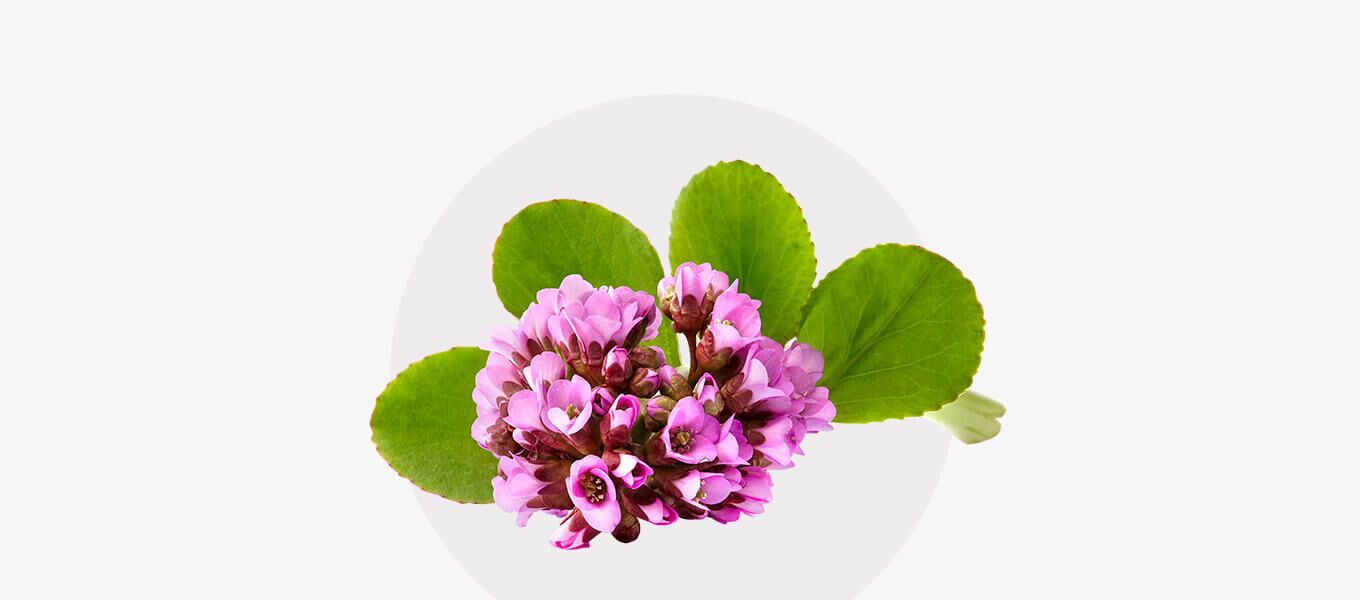Bergenia

Bergenia opens the flowering season for perennials: the long flower panicles of many varieties appear above the lush green foliage as early as April, bringing the first splashes of colour to the garden after winter. The spectrum ranges from white to pink and purple to dark red. Despite its attractive characteristics, the Bergenia is still completely unknown to many garden owners - quite wrongly, according to the Association of German Perennial Gardeners, and has therefore been named Perennial of the Year 2017.
Flowering
It is attractive in leaf and flower, versatile, uncomplicated to care for and also available in numerous winter-green varieties - with these characteristics, any other perennial would have had its own fan club long ago. For a long time, however, bergenia led a shadowy existence in two senses. Contrary to popular belief, the perennial should not be planted in the shade, but rather in a semi-shady or even sunny spot - where it feels more at home. Direct sunlight stimulates flower formation and the leaves change colour more intensively. Their high drought tolerance across all varieties makes bergenias real all-rounders that can be used almost anywhere.
Versatile in use
The fact that bergenias prefer to romp around in sunny areas is not surprising if you know their origin: the robust perennials with the firm leaves, fleshy flower stems and flower clusters that appear in lush clusters originate from mountainous regions in East Asia. There, most species grow on gravel and scree with reasonably fresh, nutrient-rich soil. The evergreen bergenias are slug-resistant, almost indestructible and delight with their beautiful leaves and flowers all year round. They also bring structure to the perennial garden in winter. However, these versatile plants are not only suitable for edging beds, they also thrive along walls and fences as well as at the edge of ponds above the swamp zone and in gravel beds. The ornamental varieties in particular can also be used for planting in containers on balconies and terraces.
The broad bergenia leaves go well with delicate ornamental grasses, ferns and other perennials with rather slender, upward-striving structures. In the border, for example, bergenias form a beautiful contrast to star umbels, cranesbills and asters. They are at their best when planted in small groups.
Seasonal play of colours
With a few exceptions, ground cover plants are evergreen - unless their leaves turn red in autumn and winter. A particularly attractive play of colours is created when the first frost has breathed its icy breath over the glossy leaves: Then they glow in the most marvellous shades of red. This neat sight remains intact even when firm stems with white, pink or purple bell flowers gradually emerge from the ground in spring. Only then do the old leaves gradually turn brown. A few varieties come back in late summer with a second flowering period.
Incidentally, cut bergenias also last a very long time in the vase. Although the flowers are an attractive sight, it is the leaves that make the bergenia even more ornamental in the garden. The dense, approximately 20 to 40 centimetre high leaf pads - known as clumps - are present all year round, protect the soil and suppress weed growth.













